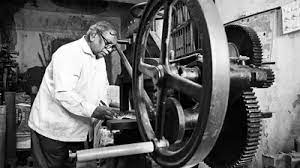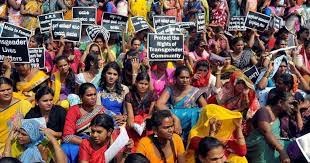Dalit Panthers: Founding A Movement

The Dalit Panthers were committed to the mission of fighting cruelty and oppression
J.V. Pawar
After Dr Babasaheb Ambedkar’s death (Mahaparinirvan) on 6 December, 1956, Pandit Jawaharlal Nehru, the then Prime Minister of India, described Dr Ambedkar as a jewel of his ministry, a revolutionary and a challenge to Hindu society. His differences with Gandhiji were known to all. There was this equation at the time that the Congress Party was Gandhi and Gandhi was India. Gandhism or Congressism existed at the ground level in villages. The Congress Party was in power and hence, Congressmen were responsible for atrocities on Dalit communities. So long as Babasaheb was alive the atrocities perpetrated on Dalits were comparatively less.
Babasaheb was a nationalist. He wanted to convert the country into a nation whereas Gandhiji was casteist, religious and regionalist. Babasaheb used to say that I am first Bharatiya and Bharatiya last, too. Gandhiji was first a Baniya, secondly a Gujarati and last, a Hindu. He was never Bharatiya. After Babasaheb’s Mahaparinirvan, several atrocities on Dalits were committed in inhuman ways to take revenge on Babasaheb.
We were writers. We used to write that we will fight against cruelty but that was only on paper. During this time, we learnt about the agitation of the Black people of America against the Whites under the banner of the Black Panther militant movement. This movement was formed by Bobby Seale and Huey P. Newton. Time magazine was publishing their stories. Indian newspapers were also publishing stories about all types of atrocities committed on Dalits in India, especially about the molestation of women. One story was about two women who were stripped and paraded naked at Brahamangaon of Parashani district. They were blamed for walking past a well from which caste Hindus fetched drinking water. Their shadows had been reflected in the water and thereby the water was labelled polluted. The casteist villagers stripped the women and thrashed them with the branches of Babool trees.
Yuvak Aghad, an organisation of which we were also members, decided to visit the village and offer sarees to those two women. Namdeo Dhasal and I walked out of the meeting and refused to visit the village. On 29 May, 1972, Dhasal came to my house as usual to discuss what action should be taken against the increasing atrocities. We, on the streets of Bombay city, decided that a militant movement should be started here like the Black Panthers in America. We named the movement ‘Dalit Panther’ and published a news item in Marathi newspapers. A small report was published in the inside pages of newspapers but nobody took cognizance, not even the police department. They treated it as another group of the Republican Party.
J.V. Pawar, Namdeo Dhasal and Chetan Shinde, editor of Marathi periodical The People’s Post
J.V. Pawar, Namdeo Dhasal and Chetan Shinde, editor of Marathi periodical The People’s PostCourtesy: J.V. Pawar
The two of us (me and Dhasal) founded Dalit Panther but without the strength of youths, nothing can be done. Hence we arranged a melava (conference) on 9 July, 1972 in the area where I was staying. This was attended by Raja Dhale, Sangare and other youths and was presided over by A.S. Kasabe. In this conference, Raja Dhale shared an action programme of celebrating Black Day on 15 August, 1972. The Government of India decided to celebrate the silver jubilee day of Independence on that day. Our black flags were seen everywhere and some other organisations also participated in our Black Independence day. As per the orders of the Central government, the legislative session had already begun. We started a parallel legislative of which I was sabhabat (president).
On 15 August, 1972, an article by Raja Dhale was published in the weekly, Sadhana, from Pune. It became controversial. This article was treated as being disrespectful to the national flag. Dhale’s intention of writing was to show the discrepancy between the punishment meted out to those disrespecting the national flag and to the perpetrators of atrocities on Dalit women. The newspapers of September 1972 were filled with anti-Raja Dhale and pro-Raja Dhale pieces. We held our first public meeting on 2 October, 1972 in which myself, Namdeo Dhasal and Raja Dhale were the main speakers.
We, On The Streets Of Bombay City, Decided A Militant Movement Like The Black Panthers In America Should Be Started Here. Action Had To Be Taken.
From September to December 1972, we visited many villages in Thane, Pune and Nasik where atrocities had occurred. Dalit Panther put pressure but we did not resort to violence. Our ideology was that of Ambedkar, we wanted the effective implementation of Constitutional provisions. We had manpower but no money and media reach. Our visits to villages turned into advertisements. For example we used to visit places along with hundreds of youths where Dalits were being ostracised and human excreta was dumped in wells. After entering a village, we would catch hold of the Patil, the village chief, and compel him to drink the polluted water. Scared by the sight of the mob of youth, he would obey the orders of the Panther leader. This news would spread to nearby villages.
In the first week of 1974, a by-election for MP was announced in Mumbai South constituency. We were the majority in this area and hence, we decided to boycott the election. For this declaration, a public meeting was held at Worli Ambedkar Maidan. It was disrupted by the Congress and the Shiv Sena with the help of the police department and converted into communal riots, which continued for about three months. A morcha was organised on 10 January, 1974 in which Bhagwat Jadhav died. The whole of Bombay city was on the brink of an explosion.
We have achieved our mission of filling up positions and addressing the backlog in services. Because of our agitation, the government was compelled to fulfill our demands. Dalits were sidelined in every field but because of Babasheb’s teachings and the agitation staged by the Dalit Panthers, today, we fight with the pen and the brain. We were not allowed to touch the holy books but now, granthas are being published by us.
Dalit Panther was disbanded within three years. The reason was egoism in leadership and interference of Communists. Ambedkarites are very much against communalism. Dhasal once said that he was born a Communist. He was removed from the very organisation that he co-founded.
That being said, an organisation like Dalit Panther is absolutely required to fight against atrocities. The name may differ but fighter and revolutionary organisations are a must.
(Views expressed are personal)
(This appeared in the print as ‘Dalit Panthers’)
Courtesy : Outlook India
Note: This news piece was originally published in outlookindia.com and used purely for non-profit/non-commercial purposes exclusively for Human Right







